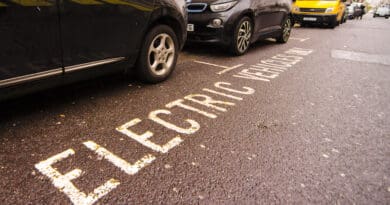
Finding the balance between AC and DC is key to charging roll-out
Alok Dubey is regional director of western Europe at charge point management platform Monta. Here he explores the need to offer a variety of charging options to make the EV transition easier
AC and DC charging for electric vehicles each brings their own benefits and drawbacks to consider.
DC (direct current), which is stored in the battery, brings faster charging, meaning it is more suited to faster charging, when time is short for the driver while en route. AC (alternative current), meanwhile, is slower but proves ideal for shorter journeys and less time-sensitive charging.
AC charging is ideal for destination charging and on-street parking, as well as at home, with portable chargers also coming with AC power. Meanwhile, you will mostly see DC charging at service stations, with this kind of power lending itself better towards longer road trips, emergency fuelling and fleet vehicle management.
The importance of flexibility
When it comes to continuing to boost the uptake of electric vehicles, interoperability across platforms is paramount. As use cases across home, work and the open road continue to diversify with the rising presence of infrastructure, charging points and stations must evolve with demands. With the different levels of energy being used between AC and DC EV charging, there comes a need to strike a balance.
One problem with installing more DC points is that they are bulky, and take up more space than AC points. What’s more, charging speeds decline after 80% when charging at DC points – making it less useful to charge past that point. DC charging also tends to cost more than AC, with higher costs being involved in installation.
With the increased planning needed to carry this out – and the possible counter-intuition involved in using up green space – it makes more sense to address the protocols involved, rather than hardware. DC charge points found at service stations need a wide variety of charging options, for shorter journeys and other needs that can only be satisfied by AC power.
Combined charging capabilities
One way to make going between AC and DC more seamless, without needing to build new infrastructure, is by using connectors that facilitate charging with both kinds of energy.
A combined charging system (CCS) can help to overcome the collective pitfalls of EV infrastructure, by standardising AC and DC processes.
A one-size-fits-all approach to charging allows drivers to leverage AC and DC options from any charge point. CCS connectors support AC and DC charging in one port. While similar to regular Type 2 charging, a CCS delivers on fast and rapid charging by featuring two extra power contacts.
Rolling this solution out more widely can prove ideal in striking a balance between AC and DC charging needs.
Balancing grid energy
Another facet of this needed balance is the possible strain on the grid that can come with scaling EV charging. Grid instability and outages can occur when peak time demand, such as the beginnings and ends of journeys to and from work, aren’t properly managed. Conversely, a surplus of energy can go unused when demand is low.
To ensure that drivers aren’t being brought to a standstill, providing the option of DC charging in more areas can help to preserve grid energy. Mitigating the need to convert AC energy to DC for insertion into the battery would help to preserve grid energy where necessary while overcoming the issue of unused resources.
Meanwhile, app software features like PowerBank allows for grid imbalance detection when connecting between different home charge points and the grid. Briefly pausing charging where necessary helps to improve the reliability of that grid energy, as well as mitigating congestion pitfalls.
Smoothening integration and interoperability
Clearly, further standardisation between AC and DC EV charging approaches is needed to stay on top of diversifying driver needs.
But through encouraging the adoption of combined charging and grid power monitoring capabilities, the industry can go a long way in making charging from anywhere more seamless, while optimising energy usage for the future.





